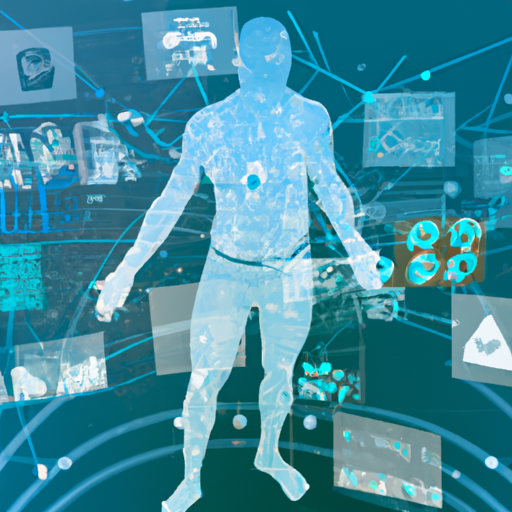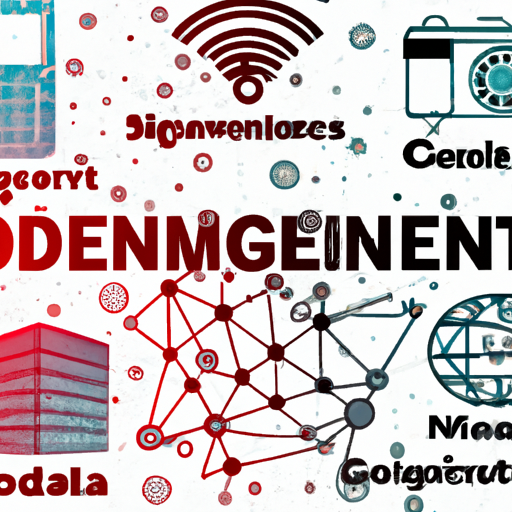-
Table of Contents
“Unlock the Future of Health and Wellness with Digital Health and Wearable Technology”
Introduction
The future of health and wellness is an exciting and rapidly evolving field. With the advent of digital health and wearable technology, we are seeing a revolution in how we monitor and manage our health. Digital health and wearable technology are enabling us to track our health and wellness in real-time, allowing us to make more informed decisions about our health and lifestyle. This technology is also allowing us to access personalized health advice and services, as well as providing us with the tools to better manage our health and wellness. With the continued development of digital health and wearable technology, we are likely to see even more advances in the future of health and wellness.
Exploring the Benefits of Wearable Technology in Health and Wellness
Wearable technology has become increasingly popular in recent years, and its potential to improve health and wellness is becoming more and more evident. Wearable technology is defined as any electronic device or product that can be worn on the body, such as fitness trackers, smartwatches, and even clothing. These devices are designed to monitor and track various aspects of a person’s health and wellness, such as heart rate, sleep patterns, and physical activity.
The use of wearable technology in health and wellness has numerous benefits. For starters, it can help individuals better understand their own health and wellness. By tracking various aspects of their health, individuals can gain insight into their own habits and behaviors, and make changes accordingly. For example, if a person notices that they are not getting enough sleep, they can adjust their lifestyle to ensure they get the rest they need.
Wearable technology can also be used to monitor chronic conditions. For example, individuals with diabetes can use a wearable device to track their blood sugar levels and receive alerts when their levels are too high or too low. This can help them better manage their condition and reduce the risk of complications.
In addition, wearable technology can be used to motivate individuals to stay active and reach their fitness goals. Many devices come with built-in fitness tracking capabilities, allowing users to track their progress and set goals. This can be a great way to stay motivated and reach your fitness goals.
Finally, wearable technology can be used to connect individuals with their healthcare providers. Many devices come with the ability to share data with healthcare providers, allowing them to monitor a patient’s health remotely. This can be especially beneficial for individuals with chronic conditions, as it allows their healthcare providers to keep a close eye on their health and intervene if necessary.
Overall, wearable technology has the potential to revolutionize health and wellness. By providing individuals with insight into their own health, helping them manage chronic conditions, motivating them to stay active, and connecting them with their healthcare providers, wearable technology can be a powerful tool for improving health and wellness.
The Impact of Digital Health on the Future of Healthcare
The digital health revolution is transforming the healthcare industry, and its impact on the future of healthcare is far-reaching. Digital health technologies are revolutionizing the way healthcare is delivered, from the way patients access care to the way providers diagnose and treat illnesses.
Digital health technologies are making healthcare more accessible and convenient for patients. Telemedicine, for example, allows patients to access care from the comfort of their own homes. Patients can now connect with their healthcare providers via video conferencing, eliminating the need to travel to a doctor’s office. This technology also allows providers to monitor patients remotely, reducing the need for in-person visits.
Digital health technologies are also making healthcare more efficient and cost-effective. Electronic health records (EHRs) allow providers to store and access patient data quickly and securely. This technology eliminates the need for paper records, reducing administrative costs and improving the accuracy of patient data. Additionally, digital health technologies are enabling providers to diagnose and treat illnesses more quickly and accurately. Artificial intelligence (AI) and machine learning are being used to analyze patient data and provide more accurate diagnoses.
The impact of digital health on the future of healthcare is far-reaching. Digital health technologies are making healthcare more accessible, efficient, and cost-effective. These technologies are also enabling providers to diagnose and treat illnesses more quickly and accurately. As digital health technologies continue to evolve, they will continue to revolutionize the healthcare industry and shape the future of healthcare.
How AI and Machine Learning are Transforming Health and Wellness
The use of Artificial Intelligence (AI) and Machine Learning (ML) is revolutionizing the health and wellness industry. AI and ML are being used to develop innovative solutions to improve the quality of healthcare, reduce costs, and increase access to care.
AI and ML are being used to develop predictive models that can identify potential health risks and provide personalized health advice. For example, AI-powered systems can analyze a person’s medical history, lifestyle, and genetic information to identify potential health risks and provide tailored advice on how to reduce those risks. AI and ML can also be used to detect early signs of disease, such as cancer, and provide personalized treatment plans.
AI and ML are also being used to improve the accuracy and efficiency of medical diagnosis. AI-powered systems can analyze medical images, such as X-rays and CT scans, to detect signs of disease. AI and ML can also be used to analyze patient data to identify patterns and trends that can help doctors make more accurate diagnoses.
AI and ML are also being used to improve the delivery of healthcare services. AI-powered systems can be used to automate administrative tasks, such as scheduling appointments and processing insurance claims. AI and ML can also be used to provide personalized care plans for patients, such as providing reminders to take medications or providing diet and exercise advice.
Finally, AI and ML are being used to improve the quality of healthcare by providing better access to care. AI-powered systems can be used to connect patients with the right healthcare providers, such as specialists or primary care physicians. AI and ML can also be used to provide virtual care, such as telemedicine, which can help reduce wait times and improve access to care.
The use of AI and ML is transforming the health and wellness industry, providing innovative solutions to improve the quality of healthcare, reduce costs, and increase access to care. AI and ML are enabling healthcare providers to provide more personalized care, improve the accuracy and efficiency of medical diagnosis, and improve the delivery of healthcare services. As AI and ML continue to evolve, they will continue to revolutionize the health and wellness industry.
The Role of Big Data in Improving Health and Wellness Outcomes
Big data has become an increasingly important tool in improving health and wellness outcomes. By leveraging large datasets, healthcare providers and researchers can gain valuable insights into the causes and effects of various health conditions. This information can then be used to develop more effective treatments and preventive measures.
Big data can be used to identify patterns in health outcomes, such as which treatments are most effective for certain conditions. This information can be used to inform decisions about which treatments should be used for a given patient. Additionally, big data can be used to identify risk factors for certain conditions, allowing healthcare providers to take preventive measures to reduce the likelihood of a patient developing a particular condition.
Big data can also be used to identify trends in health outcomes. For example, researchers can use big data to identify which populations are at higher risk for certain conditions, such as diabetes or heart disease. This information can then be used to develop targeted interventions to reduce the risk of developing these conditions.
Big data can also be used to identify gaps in healthcare delivery. By analyzing large datasets, researchers can identify areas where healthcare services are lacking or inadequate. This information can then be used to develop strategies to improve access to healthcare services in these areas.
Finally, big data can be used to improve the accuracy of diagnoses. By analyzing large datasets, healthcare providers can identify patterns in symptoms and diagnoses that can help them make more accurate diagnoses. This can lead to more effective treatments and better outcomes for patients.
Overall, big data has the potential to revolutionize healthcare by providing valuable insights into health outcomes and improving the accuracy of diagnoses. By leveraging large datasets, healthcare providers and researchers can gain valuable insights into the causes and effects of various health conditions, allowing them to develop more effective treatments and preventive measures.
Conclusion
The future of health and wellness is bright, with digital health and wearable technology playing a major role. Digital health and wearable technology have the potential to revolutionize the way we monitor and manage our health and wellness. They can provide us with real-time data and insights into our health, enabling us to make more informed decisions about our health and wellness. With the continued development of digital health and wearable technology, we can expect to see even more innovative solutions that will help us to better manage our health and wellness.




